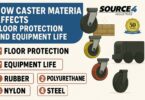Introduction
In today’s fast-paced job market, adaptability is crucial. Every industry is evolving as new technologies are constantly introduced, new businesses are continually established, and new skill sets are continually developed. For mid-career professionals, this can represent some benefits, but also some obstacles: You have a long history of highly desirable experience, yet you also need to find a way to stay ahead of the game with the latest innovations in recruitment and rapidly changing industry standards.
One type of technology present to the HR profession, and at the very heart of almost every recruitment activity, is the Applicant Tracking System (ATS). In summary, these systems automatically analyze, screen, and filter resumes of applicants without a human ever needing to see them. Therefore, the ATS is typically the first objective-based hurdle, and oftentimes the most important hurdle, when it comes to getting an interview.
The purpose of this article is to help mid-career professionals move beyond individual job applications. I will demonstrate an effective way to utilize an ATS Resume Checker as an intentional and adaptive tool for your career. Not only will this improve your chances of landing your desired role, but you can also use an ATS Resume Checker to explore progressing skill sets, gauge evolving market demands, and identify future career pathways. Consequently, ATS technology becomes more than just a barrier to employment; it becomes an important partner in providing insights on how to guide your professional development and remain competitive in your field.
II. The Evolving Career Landscape for Mid-Career Professionals
The “Experience Paradox”
Mid-career candidates have valuable experience and transferable skills worth while to employers. However, many resumes still focus on traditional accomplishments or outdated formats, whereas Applicant Tracking Systems (ATS) are looking for keywords and formats that correlate to current job postings, so candidates’ resumes full of experience, but with no modern articulation of transferable skills represented in the format required by the ATS, could be overlooked.
Competitive Landscape
The job market today is competitive, with candidates for roles at various levels: entry-level graduates who are already immersed in digital tools could be competing against specialized experts who could be bringing in specific skills. In the past, mid-career professionals used to compete just against others at that level. Now they have partnered in the form of potential employees who may have just finished a new skill or training, or their certs, or their last technical role is out of date for the job posting an employer has available.
Staying Relevant
Career movement now requires constant adjustment to stay competitive. Technology and business processes change regularly, and industries change the way they communicate and even write job descriptions. Mid-career professionals have to refresh their skills and the way they present or communicate these skills. Not only will we have to know these emerging ways of working with new technologies to apply for jobs, but we will also have to ensure that we can communicate in the appropriate constructs that are now current jargon, just to get in front of these hiring platforms and recruiters.
Time-Restricted Job Search
The majority of job seekers are mid-career professionals, and while typically stressed with current responsibilities, the added pressure of seeking new positions can be too emotionally taxing. For many managers and professionals, the added anxiety of a job search, coupled with limited time, makes it difficult to stay current in the market and develop a compelling career story. They also need to be able to stay in a high-performance zone and not find themselves depending on short-lived bucket lists, when they have to also try to meet personal life requirements. Using evidence-based approaches to job searching, not only be useful, but it can also be essential.
Understanding the ATS and the Power of an ATS Resume Checker
Basics of Applicant Tracking Systems (ATS)
An Applicant Tracking System (ATS) is software used by employers to help manage recruiting. ATS will process incoming resumes for design, pull information, and match it to certain keywords from a specific job description. Matching the right keywords will be based on programming to find key qualifications, skills, and experiences of the job, often splitting candidates into a hard rank based on those keywords.
Typical areas that an ATS will review include:
- Keywords and terminology relevant to the job (specific subject/content industry)
- formats that the software can read (.docx, .pdf, .txt)
- how clarity is offered in job titles, dates, and skills
ATS Optimization is Important
The high utilization of the ATS has generated what is known as the “Resume Black Hole,” in which, as a job seeker, there is a feeling that your resume has fallen into an evaluation space of not receiving a callback or no response from an employer. The equally common experience of mid-career professionals of submitting a highly qualifying application, but just because it was not done in an ATS-compliant process, the application is passed over before being reviewed by a human. Don’t ignore the obvious potential barriers in workflows with an employer.
What is an ATS Resume Checker
An ATS Resume Checker is a simulation tool that assesses your resume as it would, comparing your resume to job descriptions by:
- Identifying missing keywords or mismatches in formatting.
- Providing actionable feedback on areas of improvement.
- Providing recommendations on language, formatting, and skills to optimize compatibility with ATS.
This allows job seekers to process a targeted application to give themselves a better chance of being found in a recruiter’s search and being considered for advancement by a human reader.
More than a simple check: Market trends & competency insights.
Advanced ATS Resume Checkers do more than provide a keyword match. They:
- Evaluate frequently recurring requirements that appear in multiple job postings.
- Identify developing market trends and changes in competency demands.
- Identify skill gaps and offer suggestions for relevant certifications or upskilling.
Strategic Uses of an ATS Resume Checker for Staying Ahead
Translating Industry-specific Keywords and Trends
ATS Resume Checkers assist mid-career professionals in determining the specific language, technical terms, and buzzwords that are important to employers today. They review a series of job descriptions and identify various industry-recognised keywords, skills, and trending methodologies and practices, allowing professionals to rework their resumes to meet the current market expectations.
Comparing Your Resume With Current Expectations
An ATS Resume Checker will allow a user to measure their current resumes against current job descriptions. This will identify your credentials, technical skills, and skill gaps by benchmarking your file’s content with current legitimate employer requirements, resulting in an accurate and up-to-date profile.
Proactive Identification of Skill Gaps for Upskilling/Reskilling
Along with keyword matching, advanced resume checkers will identify job-related skill gaps / repeated skills you are missing. This is useful for being more intentional in upskilling or certifying or a short course, to proactively strengthen your skills and abilities to prepare for future market and industry needs and demands of what we know as immediate or urgent.
Optimizing for Lateral or Upward Mobility
Whether it’s for a lateral move or to pursue a promotion, your resume is strategically modified by ATS Resume Checkers. This tool adaptively modifies your profile for new functional areas and leader roles as they guide you through reshaping descriptions to include skill sets and accomplishments that will be valued in new roles.
Converting Significant Experience into ATS-Compatible Language
While many mid-career professionals perform meaningful work and have notable accomplishments, they seldom describe their work experience in a way that resonates with digital, automated systems or translates “human recognized” experience into an equivalent phrase with more quantifiable bullets that an ATS system will recognize. An ATS Resume Checker will assist with translating traditional experience, soft skills, and leadership accomplishments into contemporary optimized experiences and quantifiable phrases and bullets.
Keeping an “Always Ready” Resume
Using an ATS Resume Checker frequently (not just the time you are looking for a job) enables your resume to be updated continually. Only keeping your resume updated when you seek opportunities limits your ability to be ready for unanticipated opportunities, role changes in your organization, or shifts in the market, none of which you have control over. Not only will you be less able to respond during times of need, but you will also have less confidence if you need to send your resume to someone on short notice.
Brand Validation
Lastly, using an ATS Resume Checker regularly validates if you are still aligned with your market position and desired professional identity. While it reinforces the brand message you want to convey, it highlights what and where your real value proposition is and ensures your expertise is expressed in a way that humans and ATS systems will recognize.
Practical Steps for Integrating ATS Checkers into Your Career Strategy
Select a Reliable ATS Resume Checker
Select an ATS Resume Checker that provides detailed analysis and actionable feedback rather than merely a score. Focus on services that replicate real employer ATS practice, assess formatting, and benchmark your resume with current careers in the job market.
Develop and Keep a Comprehensive Master Resume
Create a comprehensive master resume with all roles and accomplishments, including skills, certifications, and significant highlights of your career. Your master document becomes File-A, in which it’s much easier to customize a resume to your specific opportunity rather than starting from scratch by following the ATS Resume checker’s suggestions.
Scan against practical job descriptions frequently.
When conducting a resume check, always select job descriptions from roles you aspire to work rather than jobs you are applying for. This proactive step is advantageous as it generates, identifies, and highlights any skill gaps and future trends, along with experiential desires that help you remain ahead of the game, to assist with the next career step in your tactical advantage.
Use the feedback and make changes, don’t just obtain a score
In essence, feedback is your process guide, not a diagnostic. You should amend your resume to reflect formatting improvements, any constants of the missing keywords, clarify any ambiguities in achievements, and add any additional skills determined by the ATS Resume Checker’s suggestions, and recast to ensure the system picks these up as improvements.
Conclusion
An ATS resume checker is not only a resource, but it is crucial for mid-career professionals working to position themselves competitively and sustainably in a rapidly changing job market. By systematically harnessing the information, experienced job seekers can better understand market trends, learn about and develop in-demand skills, and reflect on their good experience in a relevant and attention-grabbing manner. This tool allows mid-career professionals to consistently enhance, pivot, and confidently lead in their respective fields and makes the ATS a career partner–rather than a fabrication in the recruitment process.







